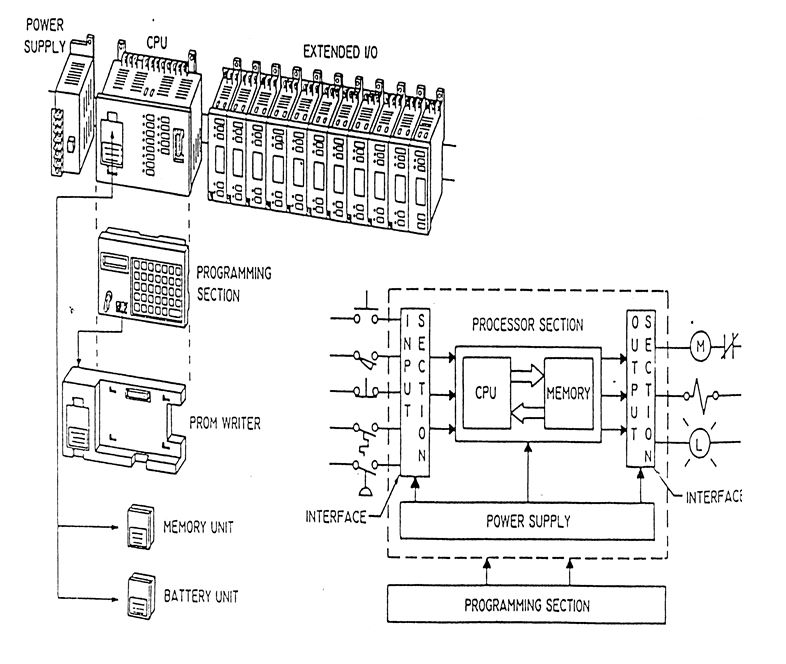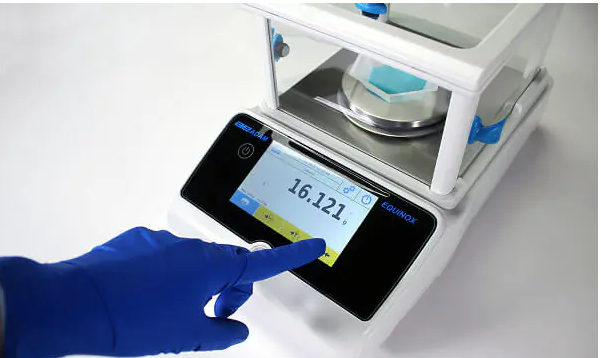
This module focuses on Programmable Logic Controllers (PLCs) and their basic architecture, main parts, power supply functions, input/output types, processor module functions, memory allocation, programming devices, PLC program languages, writing programming sheets, storing and documenting programs, entering the program, and programming hardware. It covers discrete input, data/analogue input, discrete output, I/O capacity, processor operation, memory, program scanning, programming devices, PLC program languages, writing programming sheets, storing and documenting programs, entering the program, and wiring connections of input/output modules. The module also covers the advantages of multiplexing systems and the use of the ESD PLC of USP. this module focuses on Programmable Logic Controllers (PLCs), which are digital electronic devices that use a programmable memory to store instructions and implement specific functions such as logic, sequence, timing, counting, and arithmetic to control machines and processes. PLCs have evolved from electromechanical devices like relays, solenoid valves, motors, linear actuators, and timers for years, which were used to control manufacturing operations, industrial processes, and heavy equipment. Most control was of the two-state type, which required a machine to be turned on or off. The control circuitry was hardwired to the machine and considered a permanent installation.
In the late 1960s, solid-state devices and digital electronics began to appear in industrial controllers, designed to replace older electromechanical devices. The transition to solid-state control has been more significant than expected, leading to the development of programmable controllers or PCs. These devices have capabilities far exceeding those of older electromechanical controllers, allowing for flexible circuit construction techniques, reduced downtime during changeovers, improved efficiency, and can be housed in a small space.
The first programmable controllers could only perform a limited number of functions, such as two-state control, AND, OR, and some limited timing functions. Today, these types of controllers can perform all logic functions, do arithmetic operations, and sense analogue changes in manufacturing operations. They can accept a millivolt signal from a thermocouple, multiply it by a constant, and display the results in degrees Celsius. The resulting control operation can be stored in memory for future use, displayed on a cathode-ray tube, or used to energise an alarm.
The unique features of a modern PC are flexibility, operational efficiency, and versatility. The I/O capacity of a PLC is also discussed, along with the importance of memory allocation and programming devices.
A Programmable Language Controller (PLC) is a device that can be programmed by the user, allowing them to write and change programs in the field without rewiring or sending the unit back to the manufacturer. PLCs contain pre-programmed functions, such as logic, timing, counting, and memory functions, which can be accessed through control-oriented programming languages. They scan memory and inputs and outputs (I/O) in a deterministic manner, providing error checking and diagnostics.
A PLC can be monitored through indicating lights or external devices that display program execution status. It is packaged appropriately to withstand the temperature, humidity, vibration, and noise found in most factory environments. PLCs are generally not designed for a specific application but can handle a wide variety of control tasks effectively.
The four basic parts of a programmable controller are the power supply, input/output interface sections, processor section, and programming section. These parts work together to accept inputs from various sensors, make logical decisions as programmed, and control outputs such as motor starters, solenoids, valves, and drives.
The power supply provides all necessary voltage levels required for the programmable controller's internal operations, and it must provide constant output voltage free of transient voltage spikes and other electrical noise. The input/output interface section functions as the eyes, ears, and hands of the programmable controller, receiving information from pushbuttons, temperature switches, pressure switches, photoelectric and proximity switches, and other sensors. The output section delivers the output voltage required to control alarms, lights, solenoids, starters, and other supports.
Discrete Input is the most common type of inputs used in a PLC, and it can be used to control various functions such as light, move, grip, rotate, extend, release, heat, and more.




